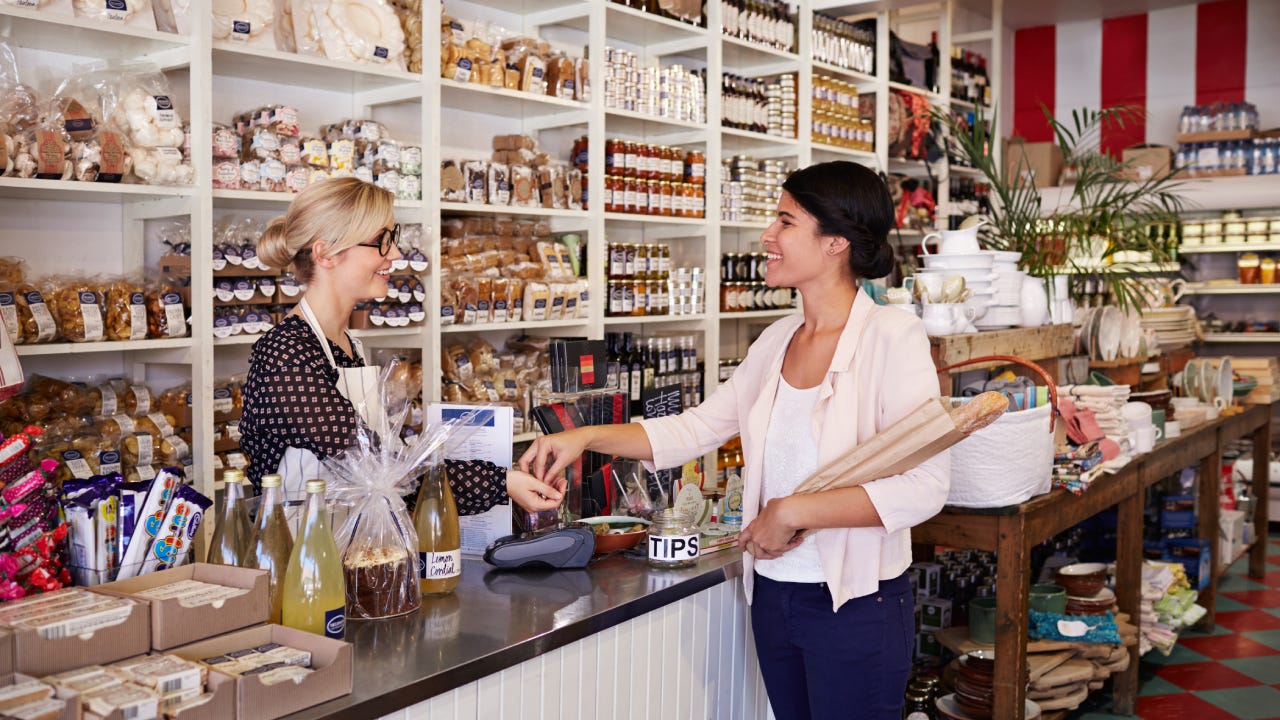Survey: More holiday shoppers will likely shop on Small Business Saturday than Black Friday this year

The Bankrate promise
At Bankrate we strive to help you make smarter financial decisions. While we adhere to strict , this post may contain references to products from our partners. Here's an explanation for . The content on this page is accurate as of the posting date; however, some of the offers mentioned may have expired. Terms apply to the offers listed on this page. Any opinions, analyses, reviews or recommendations expressed in this article are those of the author’s alone, and have not been reviewed, approved or otherwise endorsed by any card issuer.
Small business owners across the country might want to stock up on inventory or hire extra help for the coming weeks. A new survey from Bankrate found 59 percent of holiday shoppers are likely to shop on Small Business Saturday this year, ahead of Black Friday (56 percent), but behind Cyber Monday (66 percent).
Founded in 2010 by American Express and cosponsored by the Small Business Administration, Small Business Saturday is an annual holiday dedicated to supporting small businesses. Nested between two shopping mega-holidays — Black Friday and Cyber Monday — Small Business Saturday is a great way to support your community while working through your holiday shopping list.
“There is always a lot of enthusiasm around Small Business Saturday,” says Ted Rossman, Bankrate senior industry analyst. “There’s a strong desire to support local businesses that are important parts of our local communities.”
Younger generations lead the holiday shopping rush
Shoppers spanning generations say they will spend their money at local retailers for Small Business Saturday, but millennials lead the way, with 69 percent of shoppers in this age group reporting that they plan to participate. Gen Zers are a close second, with 65 percent likely to shop on that day. Gen Xers and (61 percent) and Baby boomers (49 percent) are less likely to say they will be doing the same.
Overall, 80 percent of those who plan to do holiday shopping this year say they will shop on at least one of the following days: Black Friday, Small Business Saturday or Cyber Monday. Again, younger generations are most inclined to shop on the days following Thanksgiving. This includes 92 percent of millennial holiday shoppers, 90 percent of Gen Z holiday shoppers, and 79 percent of Gen X holiday shoppers. Comparably, just 71 percent of baby boomers plan to shop on any of those three dates.
Consumers see the big benefits of shopping small
Where people plan to ultimately buy their purchases this holiday season is mixed: 65 percent of holiday shoppers plan to buy from a small business this holiday season, while 78 percent plan to buy from a large business. And although 74 percent of these shoppers plan on shopping online, a significant number — 67 percent — plan to shop in person.
Despite the mixed plans, it’s clear that small businesses are competing with retail giants during the holiday 2022 season. That may be because 95 percent of holiday shoppers say that small businesses have at least one advantage over large businesses. More than half (51 percent) say they appreciate the unique gift ideas, 48 percent say they like the better customer service, and 39 percent say they appreciate that small businesses foster a sense of community.
“As our survey indicates, shoppers also shop locally because they enjoy interacting with knowledgeable staff members and discovering original gift ideas,” says Rossman.
Only 23 percent of holiday shoppers believe that small businesses offer lower prices than their more corporate counterparts, and just 14 percent think small businesses have better inventory and availability.
Older generations most likely to appreciate the advantages of shopping small
Again, different generations responded differently about the benefits of small business shopping. Holiday shoppers in older generations were far more likely to say that small businesses provide more unique gift ideas — 63 percent of Baby boomers and 53 percent of Gen Xers versus only 41 percent of millennials and 40 percent of Gen Zers.
The same split existed regarding customer service: Among holiday shoppers, 63 percent of Baby boomers and 49 percent of Gen Xers cited better customer service at small businesses as opposed to only 35 percent of Gen Zers and millennials.
Regarding small businesses fostering a sense of community, 48 percent of Baby boomers, 39 percent of Gen Xers and 30 percent of Gen Zers and millennials say small businesses contribute in this way.
Shoppers are starting early, spending more
“This is an important holiday season for small businesses that are still recovering from the pandemic and dealing with other challenges ranging from inflation to supply chain woes, labor shortages and more,” says Rossman. “I get the sense that many small businesses and their customers are optimistic and resilient despite these issues.”
And data back this up: retail sales are up nearly 10 percent from a year ago, according to the U.S. Department of Commerce. If you’re a business owner rebuilding after a tough few years, Small Business Saturday could be a boon to your bottom line.
Small businesses can take part in the holiday in a variety of ways, including offering special deals and discounts for people shopping that day, promoting their value to the neighborhood and partnering with other stores in the area to set up holiday events and sidewalk sales. Some may extend their shopping hours, opening early and staying late, to accommodate the greatest number of people. American Express also provides marketing materials for small businesses, including posters, they can put in their windows advertising the day.
In an August 2022 survey, Bankrate found that about half of holiday shoppers got started before Oct. 31, noting that Thanksgiving weekend is no longer the unofficial kickoff to the holiday shopping season. It has evolved into more of a mid- or even late-season event.
“While Thanksgiving Week remains an important tentpole event for retailers, the holiday shopping season started earlier than ever,” says Rossman. “The deep discounts began in early October with Amazon’s Prime Early Access Sale, Target Deal Days and other competing sales.”
To locate independent and local retailers in your area that are participating in Small Business Saturday, view the Shop Small map from American Express.
Methodology:
Bankrate.com commissioned YouGov Plc to conduct the survey. All figures, unless otherwise stated, are from YouGov Plc. The total sample size was 2,376 adults, including 1,936 holiday shoppers. Fieldwork was undertaken between November 2-4, 2022. The survey was carried out online and meets rigorous quality standards. It employed a nonprobability-based sample using quotas upfront during collection and then a weighting scheme on the back end designed and proven to provide nationally representative results.
Related Articles




37% of American holiday shoppers will begin their shopping in November: Is Black Friday worth it?